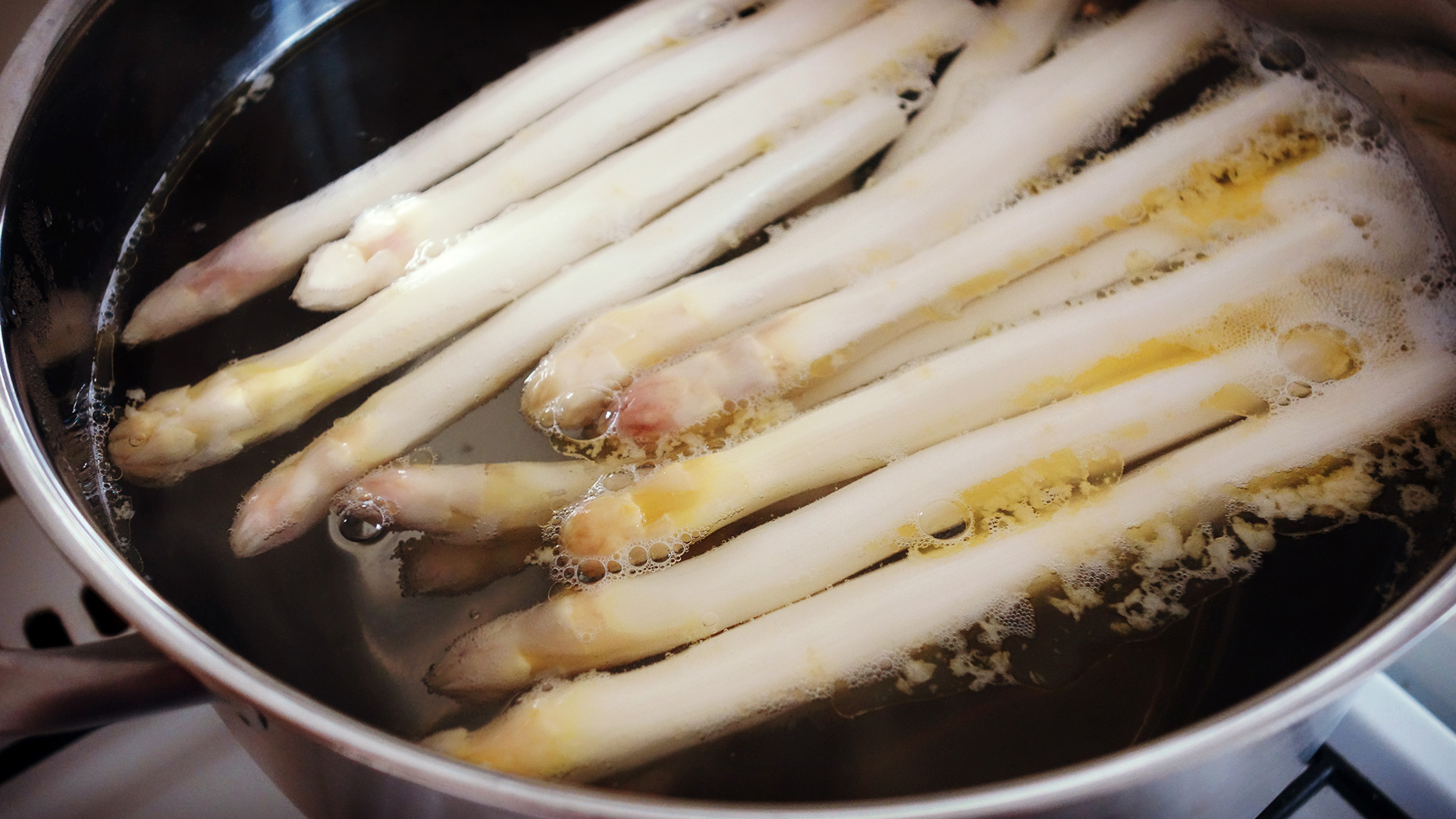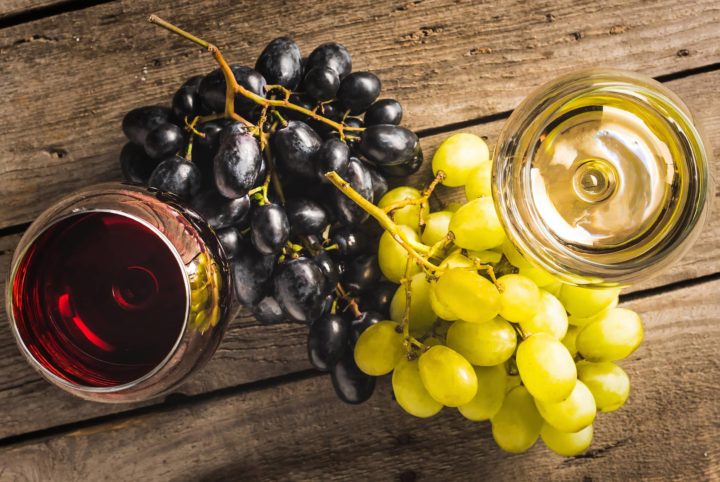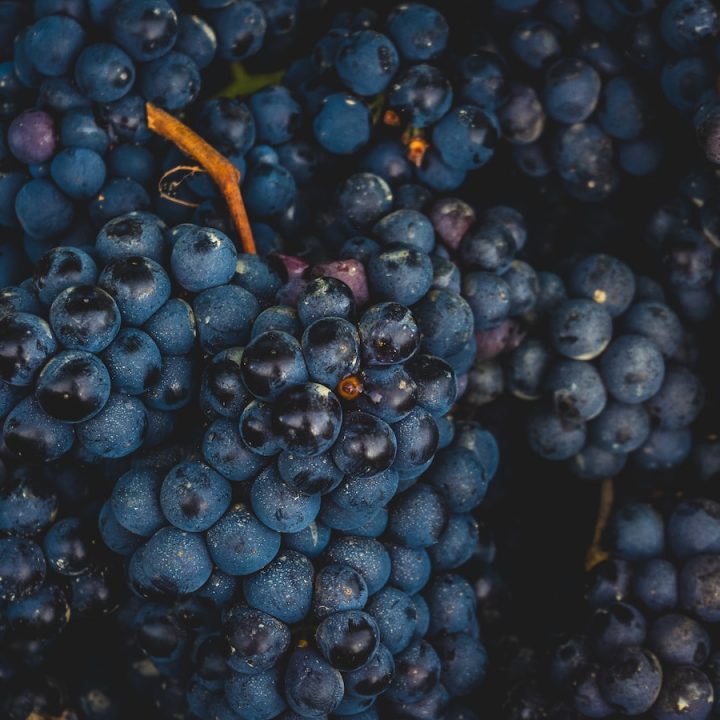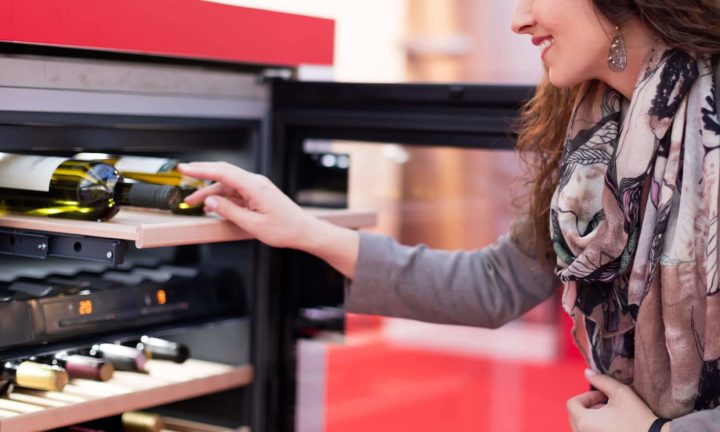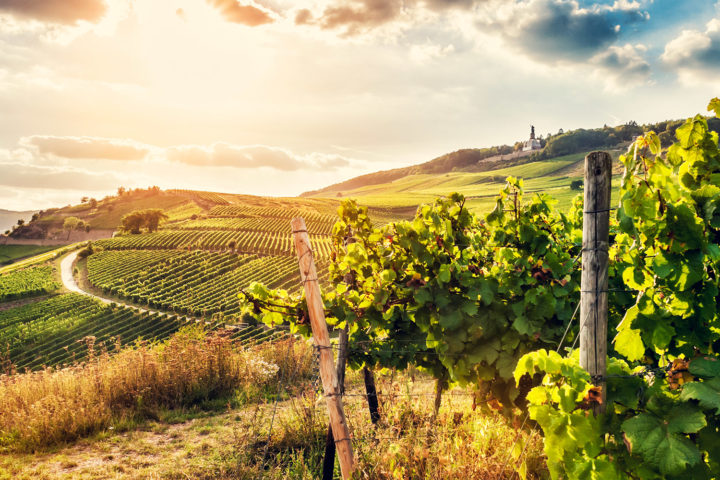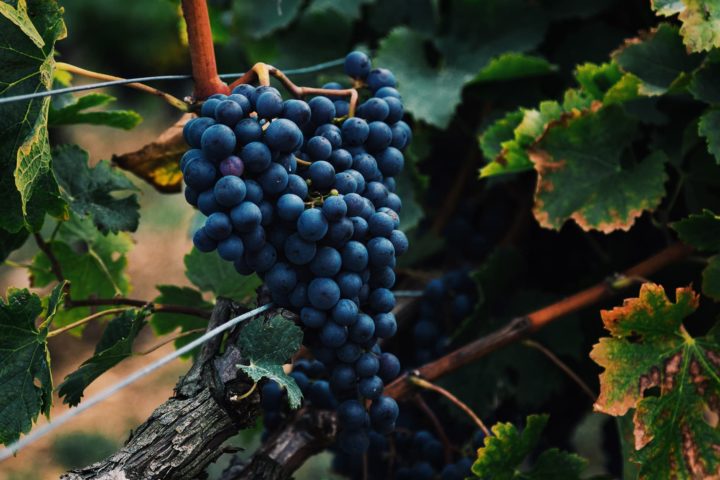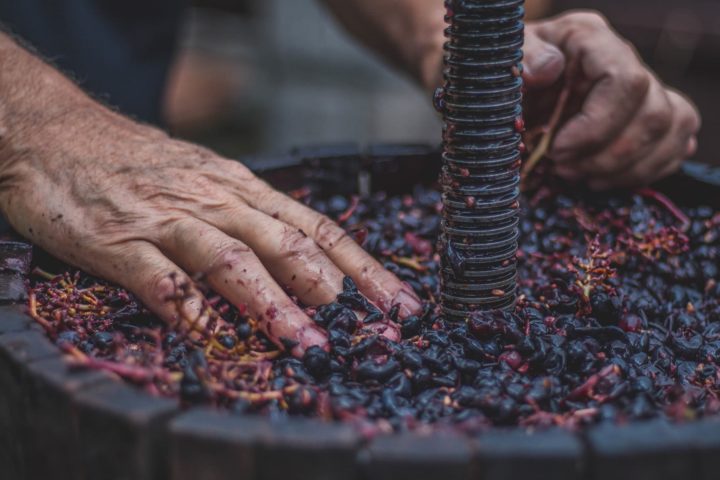Asparagus is considered by many to be the king vegetable and at the same time simple to prepare. Nevertheless, many shy away from cooking asparagus themselves and therefore prefer to enjoy it in a restaurant. The old rule also applies to asparagus: it usually tastes better home-cooked than from a professional chef.
Everything you need for the proper preparation of asparagus, you will certainly find in your kitchen. It does not require more than water, salt, peeler and a pot. If you’re still not sure how to prepare asparagus correctly, this post should help.
Which asparagus do you want?
Our beloved pole vegetable comes in three varieties: white asparagus (pale asparagus), green asparagus and purple asparagus. The correct preparation and cooking depends on the type.
White asparagus is the undisputed favorite of the Germans and has a rather mild flavor. Before preparation, it must be washed and thoroughly peeled. For the preparation of white asparagus are particularly suitable boiling or steaming. The cooking time depends on the thickness of the stems and ranges from 10 to 15 minutes.
Green asparagus is the most popular type of asparagus in the world and has a slightly more intense and tart aroma. It is not a special subspecies. The green color comes from exposure to sunlight because, unlike its paler relative, green asparagus is allowed to grow above ground and bathe in sunlight. Green asparagus rarely needs to be peeled. Only in the case of particularly thick spears, the lower third is peeled, the rest may retain its green garment. Due to its more tart aroma, green asparagus is best suited for frying in a pan or grilling. The classic is green asparagus wrapped in bacon. Green asparagus is cooked only briefly and is a real treat even raw.
Purple asparagus is a special cultivation of asparagus. It gets its deep dark color not from chlorophyll, but from anthocyanins. These react to sunlight and serve the plant as a natural sunscreen. Under no circumstances should you peel or boil purple asparagus in water, as it will lose its color and healthy ingredients. By the way, anthocyanins not only help asparagus, but also protect our cells from free radicals, because they belong to the group of substances called antioxidants.
More information about the different asparagus varieties can be found in the article: Asparagus varieties and their characteristics.
The right pot for asparagus
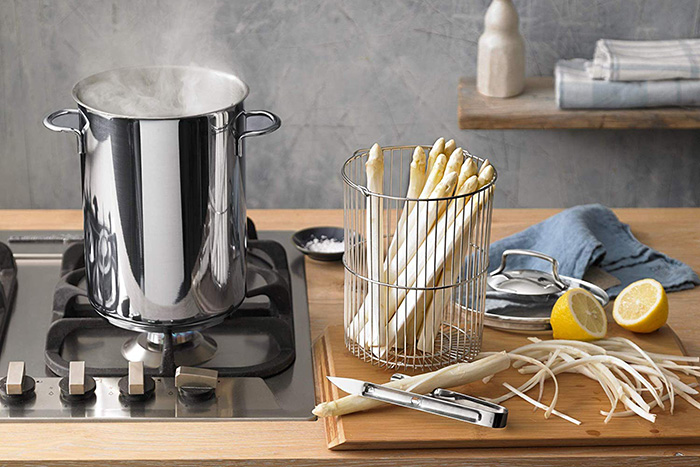
Special asparagus pots are available in stores.* In them, the asparagus is cooked standing up, while the delicate asparagus tips are only gently steamed . However, a normal cooking pot is actually sufficient. It should be large enough and not made of aluminum, as aluminum oxide can quickly give the asparagus an unappetizing gray color.
It is important that you do not add too much water to the pot. If you use an asparagus pot, only the lower third of the spears should be in the boiling water. In a regular saucepan, the asparagus should just be covered with water and not floating in the water. This way, the valuable vitamins and minerals remain in the asparagus and do not end up in the drain later.
The 5 most popular asparagus pots
| # | Preview | Product | Rating | Price | |
|---|---|---|---|---|---|
| 1 |
|
GSW Spargeltopf – hochwertiger Topf mit Einsatz-Sieb und Glasdeckel, ideal zum Kochen von Spargel,... | No ratings yet |
24,00 EUR
21,98 EUR |
Bei Amazon kaufen* |
| 2 |
|
WMF Spargeltopf hoch mit Glasdeckel 16cm, Spargeltopf Induktion, Dampfgarer 5l, Cromargan Edelstahl... | No ratings yet |
69,99 EUR
49,99 EUR |
Bei Amazon kaufen* |
| 3 |
|
Haushalt International Nudeltopf & Spargeltopf hoch (Kochtopf 4 Liter, mit Sieb und Deckel) -... | No ratings yet |
26,95 EUR |
Bei Amazon kaufen* |
| 4 |
|
HENDI Spargeltopf Set XL, geeignet für alle Herdarten, extra hohe für langen Spargel, geeignet zum... | No ratings yet |
50,58 EUR
42,83 EUR |
Bei Amazon kaufen* |
| 5 |
|
Spargeltopf aus Edelstahl, Dampfgarer mit Korb und Deckel, 16 cm, 4 l* | No ratings yet |
31,99 EUR |
Bei Amazon kaufen* |
Preis inkl. MwSt., ggf. zzgl. Versandkosten / Letzte Aktualisierung am 2025-06-14 / Affiliate Links / Bildquelle: Amazon Product Advertising API
Cooking asparagus: What belongs in the pot
- Water – Just enough so that the asparagus is covered by the water but not floating in it. In an asparagus pot, only the bottom third of the asparagus should be in the water.
- Salt – Asparagus absorbs salt during cooking, which enhances its flavor.
- Lemon juice – With white asparagus, a dash of lemon juice belongs in the cooking water. The citric acid whitens the often somewhat discolored asparagus heads and makes them literally shine.
Cooking asparagus: What does not go into the pot
- Sugar – In the past, sugar was still necessary in the cooking water to soften the bitter substances in asparagus. However, today’s asparagus cultivars are selected to contain as few bitter substances as possible. For this reason, sugar in the asparagus water is no longer necessary.
- Butter – Since some vitamins can be absorbed by our body only in combination with fat (e.g. vitamin E), always prepare vegetables with some fat. However, it is better to add the butter over it afterwards or to toss it in melted butter rather than adding a knob of butter to the cooking water.
Better than cooking – steaming asparagus
Steaming is the gentlest and at the same time healthiest cooking method for asparagus. By preparing the asparagus in a steamer, the spears are gently cooked in hot steam. Unlike in a water bath, most of the vitamins remain in the asparagus instead of being thrown away with the cooking water.
During steaming, you should never lift the lid to prevent the hot steam from escaping. The cooking time for steaming is about 25-30 minutes.
How to steam asparagus properly:
- Fill saucepan about 2 inches with water and bring to a boil over medium heat.
- Put steamer insert in the cooking pot or put it on – depending on the type.
- Place the asparagus in the steamer basket.
- Put the lid on and do not lift it in between, otherwise the cooking time will be prolonged.
Green asparagus should be rinsed in ice water after steaming to retain its beautiful color.
How to tell if your asparagus is cooked
As already mentioned, the cooking time for asparagus is strongly related to the thickness of the asparagus spears. A generally valid statement can therefore not be made. Another factor is the age of the asparagus. Fresh asparagus is less woody and therefore has a shorter cooking time than asparagus that already has a few days under its belt.
However, with a pointed paring knife, you’ll quickly determine if your asparagus is already good or needs a few more minutes. To do this, simply pierce the lower part of the asparagus with the tip of the knife: If the knife slides easily into the asparagus without the stalk feeling too soft or even mushy, the asparagus is perfect. If you lift the asparagus when you pull out the knife, it still needs a bit.
Attention: The knife test is intended mainly for white asparagus. Green and purple should have a decent bite and be cooked only briefly.
Frozen asparagus – A few special features
Asparagus is one of the vegetables that are wonderfully suitable for freezing and largely retain their quality. Thus, frozen, it keeps up to 6 months. However, it is essential to peel it before freezing, as it is not defrosted before cooking, which makes it impossible to peel later. When the water then begins to boil again, frozen white asparagus requires about 15 to 20 minutes in the saucepan.
